I Live Surrounded by the Hibiscus Rosa-Sinensis (and Other Varieties as Well)
Genus: Hibiscus; L.Family: MalvaceaeSubfamily: MalvoideaeKingdom: Plantae
Hibiscus is a genus of flowering plants in the mallow family, Malvaceae. The genus is quite large, comprising several hundred species that are native to warm temperate, subtropical and tropical regions throughout the world.
Wikipedia
Where I Live is Surrounded by These Glorious Flowers
Where I live, there’s plenty of hibiscus plants around me. In fact, the whole of the island (Tenerife) is full of hibiscus flowers, particularly around the more touristic areas.
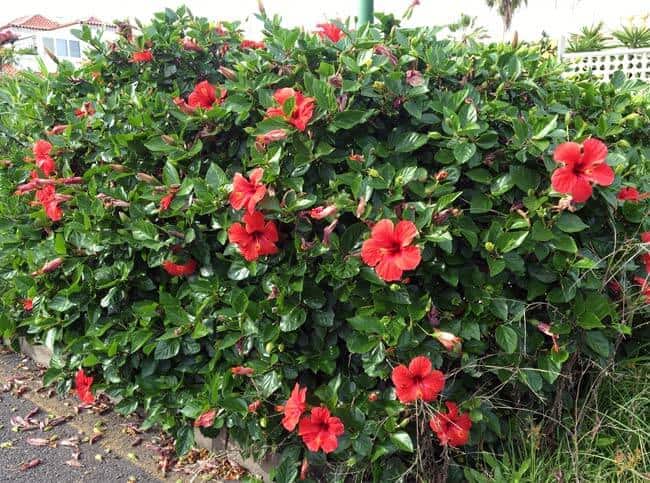
Here’s what Wikipedia says about the Hibiscus rosa-sinensis:
Hibiscus rosa-sinensis, known colloquially as Chinese hibiscus, China rose, Hawaiian hibiscus,rose mallow and shoeblackplant, is a species of tropical hibiscus, a flowering plant in the Hibisceae tribe of the family Malvaceae. It is widely cultivated in tropical and subtropical regions, but is not known in the wild, so that its native distribution is uncertain. An origin in some part of tropical Asia is likely.
Wikipedia
I took a few photos, these are just from the back of the flat where I’m living at the moment.
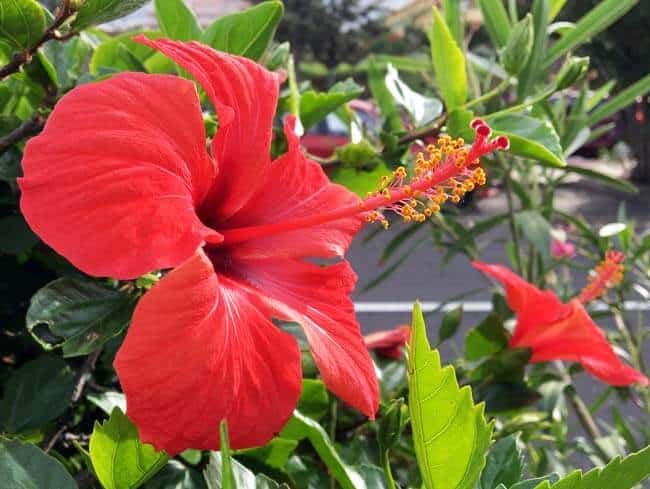
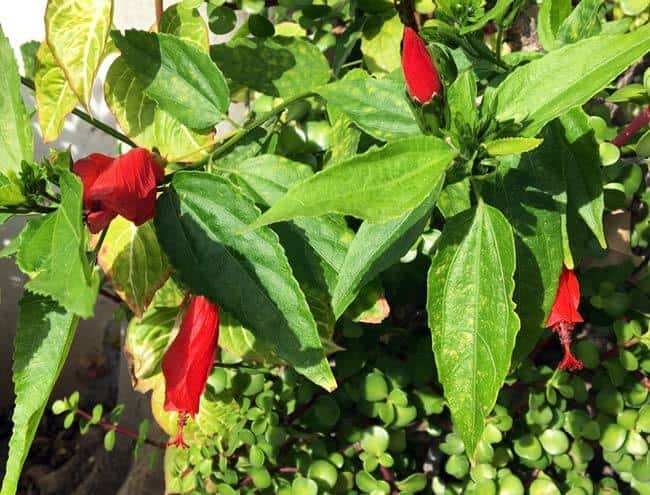
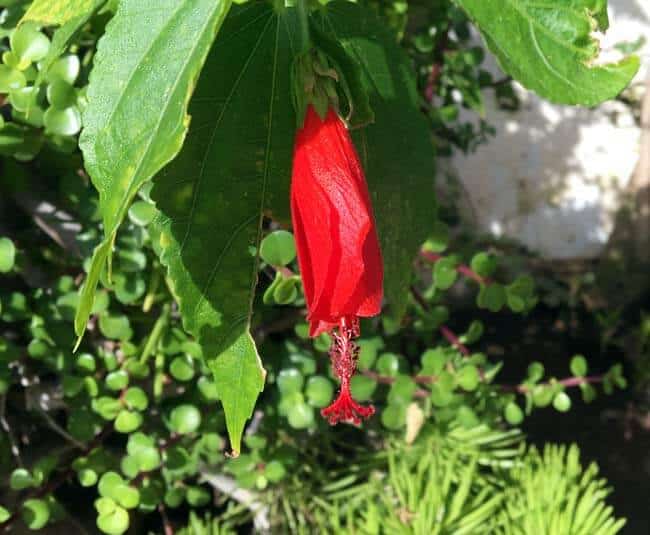
These ones below have more petals, they could be High-Definition Hibiscus, I’m not sure as I don’t really know the plant. Here’s more information about the different varieties.
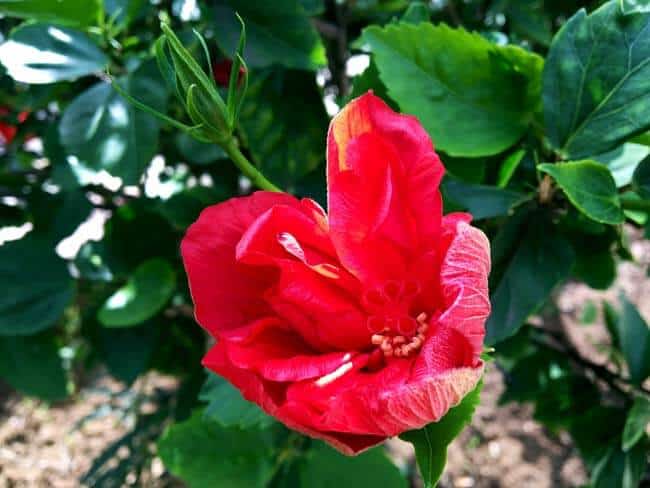
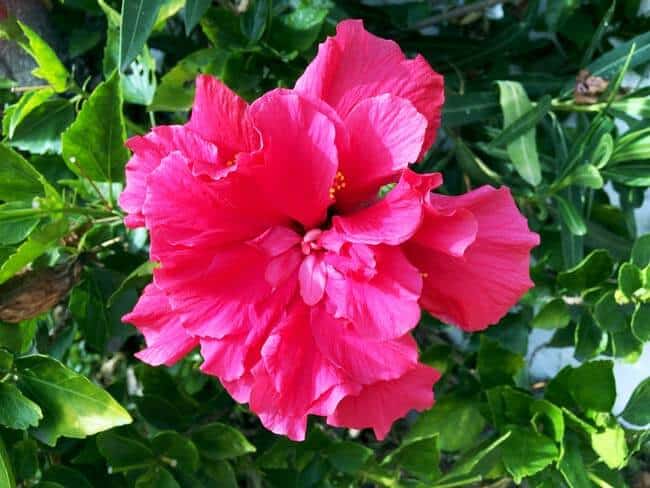
Characteristics
These are really stunning flowers, I never paid much attention to them in the past as I was so used to seeing them around. Now that I’ve lived in the UK (cold-ish climate) for almost 30 years I can appreciate the flora we have in the Canary Islands. Even though these are not part of our wild flora, they instil such beauty wherever they are. You will see them mostly around touristic areas I believe in both the north and the south of the island where I’m living (Tenerife).
Common Name: Chinese hibiscus
Type: Broadleaf evergreen
Family: Malvaceae
Native Range: Tropical Asia, China
Zone: 9 to 11
Height: 4.00 to 10.00 feet
Spread: 5.00 to 8.00 feet
Bloom Time: Seasonal bloomer
Bloom Description: Red to dark red
Sun: Full sun to part shade
Water: Medium
Maintenance: Medium
Suggested Use: Annual, Hedge
Flower: Showy
Leaf: Evergreen
Attracts: Hummingbirds, Butterflies
Source
There are so many different colours, shapes, varieties in general… I walked along the street and took photos of the different flowers, take a look below.
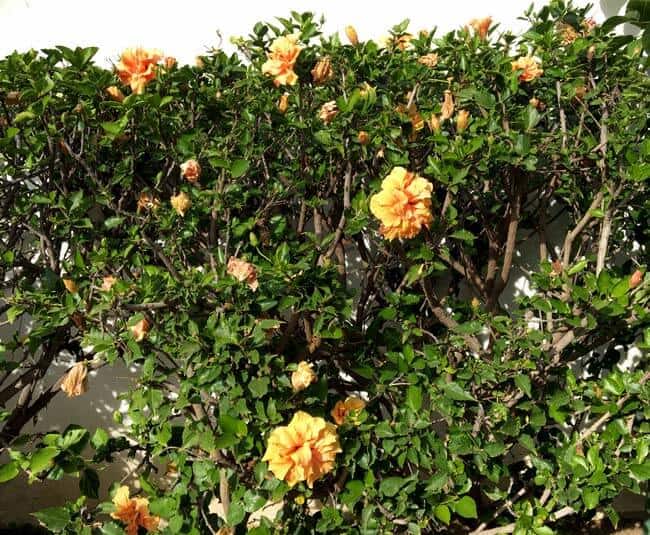
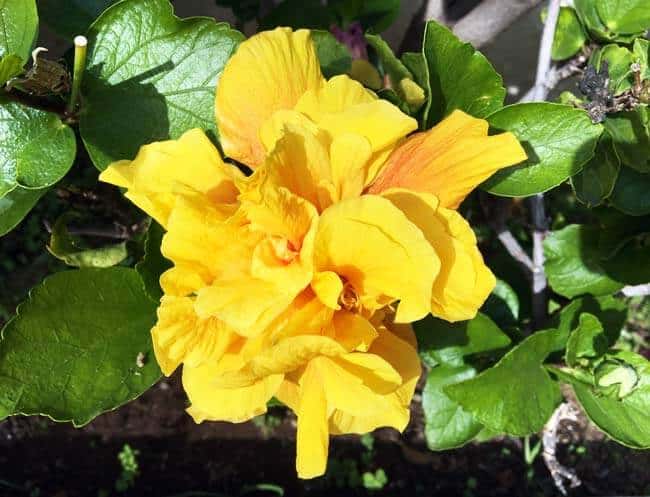
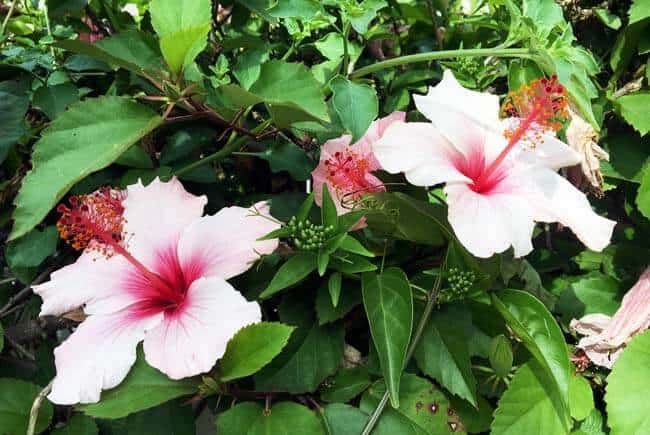
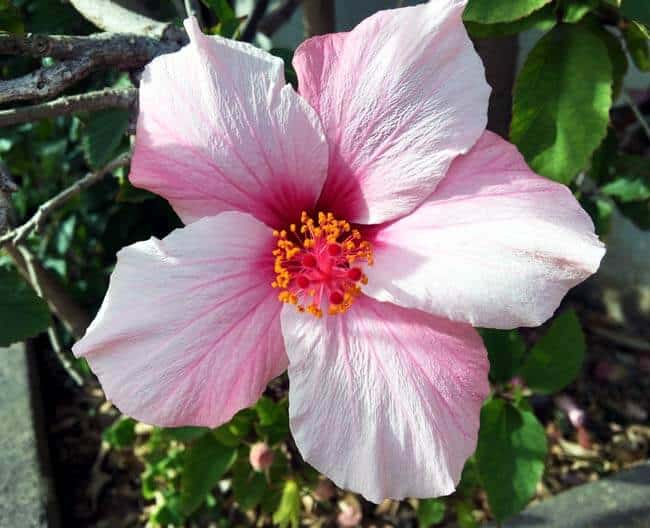
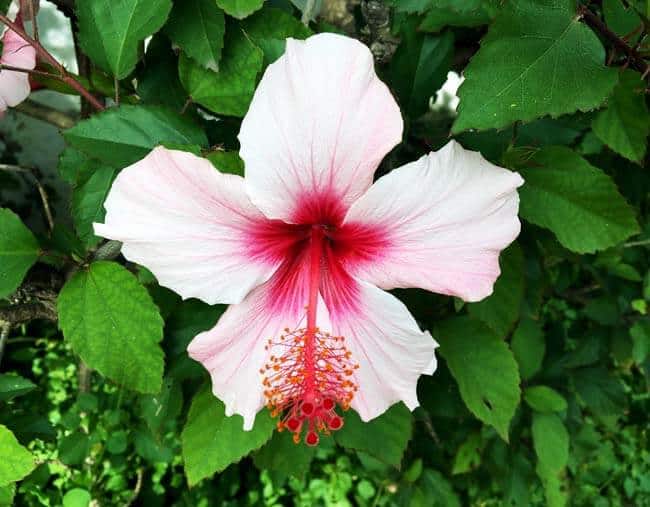
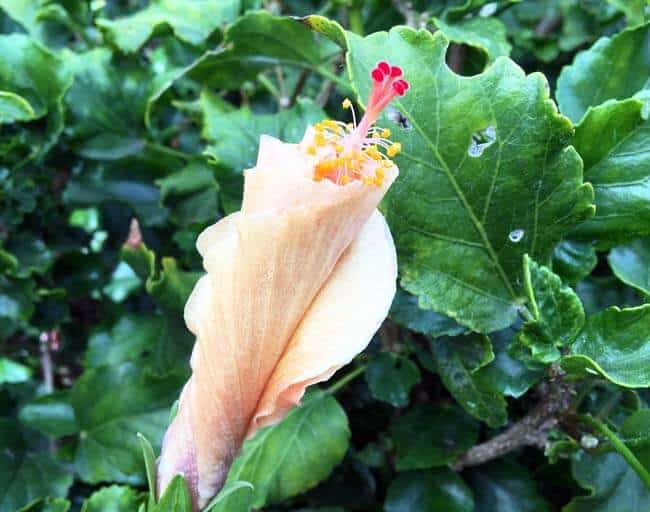
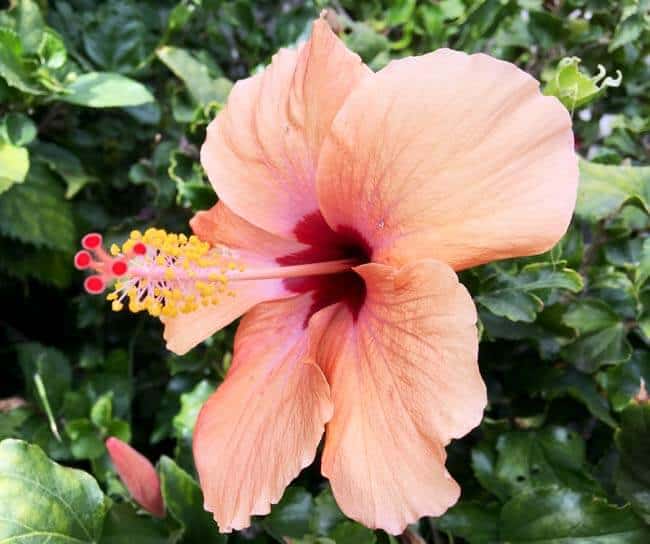
Lovely colours. I must say my favourite one is the red hibiscus. I might grow them in La Finca, not sure yet as my brother who lives there is not so keen on flowers but let’s see.
Hibiscus Tea Benefits
I bought hibiscus dry leaves back in London a few years ago, from the Middle Eastern shops around where I used to live (in Edgware Road). I remember thinking I had never seen the red petals before and couldn’t place where these could come from (which flower, basically). My teas would turn out really red, obviously, I was never keen on the tart and tangy flavour of the tea (please don’t get me wrong, it is delicious, I’m just not keen on flower teas, I personally prefer leaves or roots, one of my favourite teas being sage tea, which I take for my hot flushes).
At the time I wasn’t really into making healthy teas (obviously I would drink English breakfast, I still love it!) but didn’t know much about healthy eating/drinking besides the usuals from when I was a little girl (chamomile tea, lemon balm tea, etc) which we used to take at home.
I was unaware of the benefits of hibiscus tea and I was drinking it because I wanted to drink something other than unhealthy drinks or English Breakfast tea (at least not so much of it!). So I turned to hibiscus and other teas for refreshment and to get used to a healthier way of drinking liquids.
I’ve learnt much more regarding benefits of herbal teas since then, but I never really found out about the benefits of hibiscus tea so I thought I’d research it and publish it as part of this blog post.
According to this article, this article and this article, these are the benefits of Hibiscus tea (I sort of summarised them into one single bulleted point list)
- Packed with antioxidants (I’m not surprised, usually red, orange and yellow fruit and veg seem to be packed with antioxidants. I’m thinking about my precious carrier oils like pomegranate – a red fruit -, sea buckthorn fruit oil – a red fruit also -, rosehip oil – again, red – etc, etc). See here, here and here. Due to phenolic compounds? Not sure, I need to research this more.
- Good for the liver, a natural diuretic. So many plants are good for the liver and for detoxing. Check my dandelion articles here, here and here.
- Good for reducing blood pressure (red petals… blood… I always make these connections).
- Relieves menstrual pain (again, blood related)
- For kidney stone prevention (this study is from a different Hibiscus, the Hibiscus sabdariffa, I added it just in case it might also be a benefit that hibiscus tea in general has, but watch out just in case)
- Improves digestion (I assume most herbal teas help with digestion)
- For weight loss. I never like adding this ‘benefit’ because so many people want to lose weight for the wrong reasons (for others to like them, rather than for health reasons). So I was reluctant to add this one but I did, anyway.
Here’s a nice little paragraph from Organic Facts that summarises the benefits in a nutshell:
The health benefits of hibiscus tea include its ability to reduce high blood pressure, high cholesterol, and inflammatory problems, aid in relieving disturbed digestive and immune system, and potentially help treat diseases of the liver and cancer. Hibiscus tea may also speed up the metabolism aiding in healthy, gradual weight loss. It can also be linked with better mental health. This tea rich in vitamin C, minerals, and antioxidants.
Organic Facts
For side effects please read this article, scroll to the bottom.
I’ll Be Making Hibiscus Tea Very Soon Again
Believe it or not, I brought to Tenerife the little bit of Hibiscus dried flowers I had in London from when I bought them in Edgware Road. Also, believe it or not I threw them away only 2 weeks ago! I thought a long time had gone by and really after 1 year herbal teas will not have the same power (please research this, I was told this by the lady that sells me my dried herbs in Puerto de la Cruz, north Tenerife).
So, I’ll go back to my lady and buy hibiscus flowers again very soon. I’m still not keen on the flavour but maybe I could mix with peppermint and ginger to give it a bit of a kick. Yep, that sounds really nice!
Reasons I’ll be Taking it For
Out of all the benefits listed above, the ones that I really like for myself are the managing blood pressure, being a good antioxidant and it being a natural diuretic. All of those benefits are really good for me, and let’s add the weight loss one as well since I’m trying to eat really well and keeping my weight in check is also a plus!
Wanna Grow Hibiscus? Helpful Videos
I’m not ‘there’ yet, but I think I’ll be growing Hibiscus in La Finca at some point. I wouldn’t grow them just for their beauty (don’t get me wrong, they’re stunning but I prefer to spend my time and energy growing what I’m going to eat), but since it makes such a lovely summery tea and I like the benefits listed above, I’ll give it a try at some point in the near future.
If you’re ready to grow it at home, check the videos below:
Get it From Amazon
You can either buy the dry petals (that’s what I personally like) or ready tea bags. Your choice.
Organic Hibiscus Petals
[amazon box=”B0012BSDNW”]
Hibiscus Ready Tea Bags
[amazon box=”B0089VPTXK”]
Helpful Links
All You Need to Know About Hibiscus
